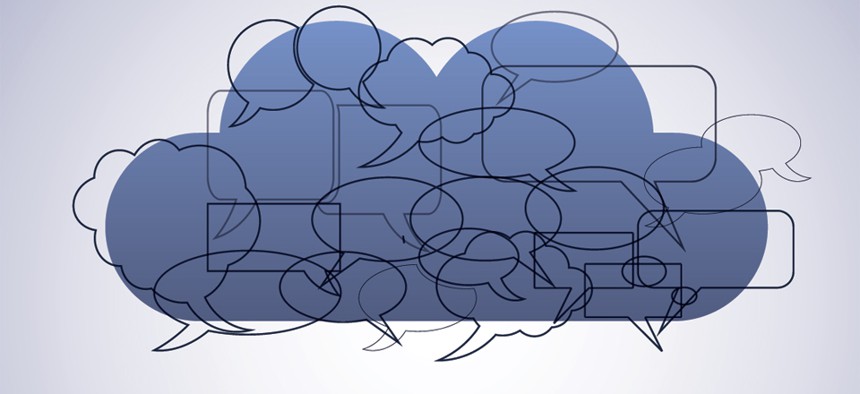In Aereo’s Supreme Court Case, What’s Really on Trial is the Cloud

Jozsef Bagota/Shutterstock.com
The Supreme Court will hear arguments in that same case on April 22.
Anyone can stick an antenna in the air to watch broadcast television for free in the United States. And courts have said it’s fine to record TV shows for watching later.
Aereo does both of those things . The startup has put tiny antennas on rooftops in 11 American cities to pick up TV signals, which it then transmits over the internet . Customers pay Aereo $8 to $12 a month to watch live and recorded broadcast television . It appeals to those who don’t want to pay for cable TV but still want to watch The Good Wife on CBS or the Oscars on ABC— cord cutters , in other words.
All of the major broadcast networks sued Aereo, calling it an obvious copyright violation. Under the law , TV shows can only be performed publicly by their copyright holders or those with a license, such as cable companies. The question before the US Supreme Court is whether Aereo’s service amounts to a “public performance” of TV—which would be illegal, since Aereo has neither a copyright nor a license to do that—or something else that’s actually legal.
Bars aren’t allowed to charge money to watch a football game on a large television set because that’s a public performance of a copyrighted work. Hotels can’t buy one copy of a movie and transmit the signal to any room that requests it. Department stores need a special license to play music over speakers to all their customers. Courts have ruled that those are clearly public performances.
Aereo’s status is less clear. The networks note (pdf) that the Copyright Act of 1976 considers a performance to be public even if people watch it in different places at different times, which would seem to include Aereo. Of course, when that law was written, storing TV shows in the cloud would have seemed like science fiction; the Supreme Court hadn’t even yet ruled that recording television on a Betamax tape was OK. But that may be beside the point: one reason Congress wrote the 1976 law in the first place was to prevent companies from retransmitting broadcast TV without a license. The technical details, arguably, don’t matter.
In its defense (pdf), Aereo points to a 2008 appeals court ruling known as Cablevision, which said it was fine to record TV shows with a cloud-based DVR and watch them later. That’s a private performance, the court found, and doesn’t require a copyright license. Aereo constructed its service expressly to comply with that ruling. For example, Aereo uses one antenna at a time per customer and stores separate copies of TV programming—not the most efficient way to run the service—in an effort to keep things private and avoid a public performance. The court that issued the Cablevision ruling agreed last year (pdf) that the same principles apply to Aereo and said the startup could keep doing its thing.
The Supreme Court will hear arguments in that same case on April 22. That the justices took the case in the first place suggests they want to review the Cablevision decision, and may have a different interpretation of what constitutes a public performance. If so, that’s bad news for Aereo.
Then the question becomes how sweepingly the court will rule. A broader judgment overturning Cablevision could make other technology that relies on cloud storage or transmits TV over the internet seem like a copyright violation, too. How about Slingbox ? Or Apple’s iCloud ? Or Amazon’s Cloud Player ?
That’s what makes the Aereo case more significant than the fate of a small startup. The networks argue that Cablevision was a bad decision and should be overturned. For its part, Cablevision, a small cable TV provider that pioneered the cloud DVR in question, thinks the Supreme Court (pdf) should uphold the previous ruling but still find that Aereo is violating copyrights using narrower logic. The US government also maintains that (pdf) Aereo’s service is illegal but that the decision “need not threaten cloud computing.” Ultimately, the legality of Aereo’s service will matter less than how the justices choose to approach the question.
Here’s the simplest way to think about Aereo: a TV antenna attached to a DVR with a very long cord. That would seem to be perfectly legal. But since the long cord is actually the internet, what’s really on trial at the Supreme Court is the cloud.
NEXT STORY: VDI moves to the cloud





